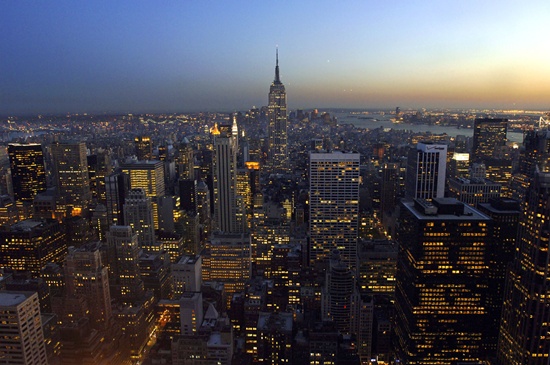
September 30, 2015
WASHINGTON (AFP) - New York City faces an increased risk of flooding, similar to what occurred during Superstorm Sandy in 2012, as global warming causes more frequent storms and sea levels to rise, scientists said.
Researchers reported that mega-storms on America's northeast coast could begin occurring every 25 years or so, compared to every 500 years before industrialization, in a study out Tuesday.
And the scientists pegged the blame on global warming from greenhouse gas emissions caused by human activity.
The research was carried out by studying marine sediment and computer models that allowed the researchers to observe the frequency and power of hurricanes in the North Atlantic from the year 850 to 1800.
The researchers were then able to compare those results with data from 1970-2005, according to the study in the latest edition of the Proceedings of the American Academy of Sciences (PNAS).
The researchers concluded that the storm surge, or rise of water caused by a storm, was on average four feet (1.24 meters) higher during the recent 30-year period, compared with the nearly 1,000-year period.
This, they said, was primarily the result of rising sea level.
"Sea level is rising because of climate change," said Michael Mann, a co-author of the study and professor of meteorology at Penn State University.
"But climate change also appears to be leading to larger and more intense tropical storms," he added.
The flooding caused by Sandy was the result of several factors: rising ocean levels, high tide and especially the storm's overall size, the researchers said.
"We wanted to look at the impact of climate change on sea level and storm characteristics to see how that has affected the storm surge on the Atlantic coast, specifically in New York City," said Andra Reed, a graduate student in meteorology at Penn State and the study's lead author.
"Sandy was the motivating factor," she said.
The superstorm, which devastated swaths of New York and New Jersey when it struck on October 30, 2012, killed 132 people and caused billions of dollars in damage.
A large number of road and subway tunnels were flooded after storm waters breached Manhattan's southern tip at Battery Park.
In late August, NASA scientists said that sea levels were rising around the world, and the latest satellite data suggests that three feet (one meter) or more is unavoidable in the next 100-200 years.








